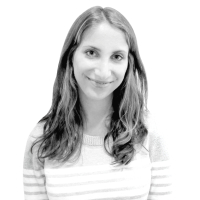In 2000, animation studio Pixar was settling into its new Emeryville, California, headquarters.
Every aspect of the campus, down to the finish on the steel beams, had been meticulously designed by the company’s owner, Steve Jobs.
He hoped that the layout—bathrooms in the center of the atrium and all types of entertainment and fitness facilities—would promote collaboration and in-person interaction between the 1,000-strong staff.
But there was one thing Jobs didn’t craft.
Upon exploring his new office after the move, animator Andrew Gordon noticed a locked hatch in his wall.
He turned the key and crawled through an air shaft tunnel that opened into a secret room.
The space had been made so building workers could perform air conditioning maintenance, but Gordon had other ideas.
“I just thought, ‘Wow, how cool would it be to build like a secret spot?’” he recalled in an animated short about the speakeasy that was included in special features of Toy Story 3.
He began hanging out in there.
In the video, he described when his boss, two-time Oscar winning Pixar director Andrew Stanton, was walking through the office during production of Finding Nemo.
Unable to locate Gordon, he ended up following the animator down the rabbit hole. “I thought I was going to get fired,” Gordon said in the video of seeing Stanton’s head pop through the vent. On the contrary: Stanton loved the space and they transformed it into a speakeasy.
It was dubbed “The Love Lounge,”—so advertised with a little neon sign above the crawlspace and personalized napkins and pillows.
They outfitted the area with Christmas lights, shag carpets, lava lamps, and, of course, a stocked bar. They even installed a camera in the outer office to watch if someone was coming.
But the word quickly got out. Instead of disapproval, all the top brass began to frequent the hidden bar, including Jobs himself.
In Walter Isaacson’s biography on Steve Jobs, he writes that Jobs loved the space, although he wasn’t a drinker. He nicknamed it “The Meditation Room” and described it to Isaacson as similar to the dorm room he shared at Reed College in Oregon “but without the acid.”
Jobs was said to spend a day per week at the headquarters, and he’d often drop into the Love Lounge.
“I mean I would be working and then Steve Jobs and John Lasseter would show up,” says Gordon, referring to the man who is now chief creative officer for Disney Animation, Disneytoons, and Pixar.
It became the go-to spot for VIP guests. The names of visitors graced the wall, from Tim Allen to Randy Newman to Roy Disney. Once, the speakeasy fit an entire band inside. Another time the cramped space was host to an entire soccer team.
Gordon moved offices, but requested an additional secret room, this one more easily accessible.
He built a bookshelf in front, which slides away to reveal the entry at the push of a button hidden in a bust of Shakespeare.
This version of the speakeasy is dubbed “Lucky 7 Lounge,” spelled out in letters adorned with Vegas-style glitter on the deep crimson walls.
Pixar also has an out-in-the-open bar. The Knife and the Fiddle was built and operated by employees.
That’s not all the Jobs-designed campus offers: There’s a theater and Olympic-sized pools, outdoor amphitheater and basketball court also on the list.
In Isaacson’s biography, he quotes Pixar director Brad Bird on the campus ethos. “If you walk around downstairs in the animation area, you’ll see that it is unhinged,” he said.
“People are allowed to create whatever front to their office they want. One guy might build a front that’s like a Western town. Someone else might do something that looks like Hawaii… John [Lasseter] believes that if you have a loose, free kind of atmosphere, it helps creativity.”





